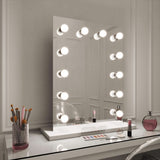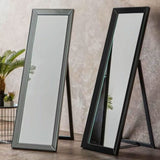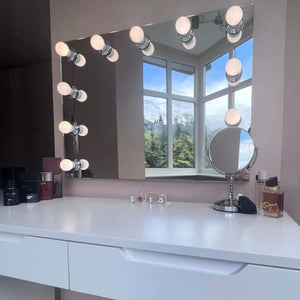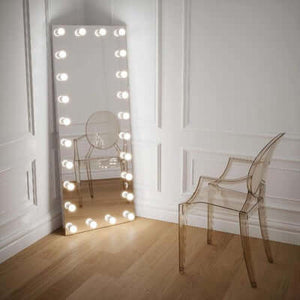College is a time of great exploration – lots of firsts, lots of ‘I can now do this if I want to,’ lots of growth. And if you’re at this stage of life, know that you could be a candidate for oft-overlooked make-up experimentation. Are you a total newbie? Or maybe you’ve been playing around with make-up for a while now? A college girl's guide to makeup essentials helps streamline your beauty routine, so you can focus on other priorities, like studying, or evenpay someone to do my homework when you're short on time. Academized.com offers homework and assignment help, making it easier to balance your academic and personal life. Either way, learning the basics can help you craft a routine that effectively and elegantly enhances your natural beauty in a way that suits your college schedule. In this guide, I’ll take you through the makeup essentials every college girl should know, from products and techniques to tricks.

Your Skin Type
It is necessary to know your skin type before you head to the make up store to buy your make ups. This is because your skin type determines the make ups that will suit you well. You ensure that the makeup you apply is suited for your skin and you remain glamorous throughout the day.
Generally, skin is categorized into four types: oily, dry, combination and normal, where the only difference between the types is: oily: the skin produces more oil than necessary and therefore shines a lot. Also, they are more prone to breakouts. Dry skin, on the other hand, could feel like it is not well hydrated as it could be dry and would have rough patches and flakiness.
As regards combination skin, this involves both oily and dry skin types. This skin type tends to be oily on the forehead, nose and chins which is known as T-zone and dry on the cheeks.
On the other hand, normal skin is known to be balanced and not oily and dry.
Figuring out what skin type you are makes it easier to decide on the right foundation, moisturizer or primer, so that your make-up doesn’t only look good, but stays put. For instance, if you have oily skin, a matte foundation and an oil-free primer are your best bet, while if you have dry skin, a hydrating primer and a dewy-finish foundation are the things to look for.

The Basics of Foundation
Foundation is the most essential step in any make-up look since it evens out your skin tone and creates a base on which you can build the rest of your make-up. A good foundation will enhance the color, the contrast of your skin tone and hide spots, scars and any other marks. There are three types of foundation, which can be applied as liquids, powders and creams, in order to suit different skin types and the amount of coverage required.
The most common and versatile type of foundation is liquid: it comes in sheer, to full coverage, and also works on all different skin types, but especially normal to dry skin. Powder foundation, designed to absorb oil and control shine, is best for oily skin. Ultimately, sheer- to full-coverage cream foundation is the best for dry or mature skin as it feels and looks hydrating on the skin and leaves a velvety finish.
For a foundation, it’s essential to get the tone right – a foundation that’s too light or too dark will make you look like you’re wearing a mask. Try putting a very small amount on your jawline to make sure it matches. And do think about your undertone (whether your skin is warm, cool, or somewhere in between) so you can find a foundation that will blend into your skin.

Concealer and Its Uses
College makeup essentials can help you maintain a polished look, and utilizing resume writing services for job seekers in Australia can further enhance your professional image as you prepare for future career opportunities. Concealer is a type of makeup that is used to cover blemishes, dark circles and other problem areas. It is generally thicker than foundation and is used more specifically, meaning that you use it only on the areas that you need to be covered.
If you have dark circles under the eyes, a liquid concealer a shade or two lighter than your foundation will brighten the area and conceal the circles. If you have a blemish or a red spot you don’t want visible, a concealer that matches your foundation will work better than a lighter shade because it will blend in better; use the same method. Take a brush (the smaller the better for precise control and application) or your fingers to pat on the concealer over the spot you want to cover, then blend outward with your finger.
Eyeshadow: Colors and Techniques
Eyeshadow is where you get to exercise your creative freedom the most on your face. It enhances the eyes by giving them more dimension and texture, and gives you free range to play with color and styles. Eyeshadow can come in a variety of finishes like matte, shimmer, and satin, and they can all be mixed and matched to your feel-good moods or whatever you’re wearing.
Neutrals, such as browns, taupes, creams, etc, are good eye shadows that you can wear every day. They provide an almost unnoticeable enhancement that’s fine for class or a study session. Pump it up a little and your eyelid color can be bolder, or try a smokey eye for something more dramatic, like an evening event or party. There are essentially three steps to applying eyeshadow: apply eyeshadow using a gradient technique: lightest shadow on the lid, medium shade in the crease, darkest shade along the lash line or outer corner.
In addition, a good blending of the eyeshadow, both within the shape of the eyeshadow application and also with the skin, will make for good use of the eyeshadow. Using your big fluffy eyeshadow brush, make sure the eyeshadow blends with the eyeshadow you’ve applied and also blend it out towards the edge of the eyeshadow, creating a gradient with the next shade of eyeshadow you’re using to create your look. That will take away any harsh line, but it is also super important for the look that you apply the colors in a way that you’re not creating any drastic changes from one color to the other, so play around and experiment until you get the technique working.
Eyeliner and Mascara for Definition
Eyeliner makes a great big-eye look.
There is eyeliner in pencil, gel and liquid form. Pencil eyeliner gives a soft, smudged look which is easier to smudge if you are a beginner. Gel eyeliner is stronger and gives a defined sharp line and is usually applied with a brush. Liquid eyeliner is best for creating really sharp, clean and
perfect lines, whether you want a winged or cat-eye look.
Starting from the corner of your eye, drag your liner in a thin line above your lashes, thickening it up a touch as you go, and then taking it slightly outwards again at the corner of your eye. You can line your lower lash line with some more liner underneath too if you want even more definition, but that’s optional. I always go for more makeup if I’m going out anywhere, and eyeliner is my favorite way to make your eyes pop and add more definition.
Mascara is the final touch to your eyeshadow - it coats your eyelashes in a shiny black finish, creating more length, volume, or both. Some brands are more voluminous, curling, or lengthening. Apply your mascara by holding the wand at the base of your lashes and stroking it upwards, wiggling as you do. Use multiple coats to give your lashes added volume - but don't go too heavy because your lashes will clump.
|
Makeup Product
|
Ideal For
|
Skin Type
|
Application Tips
|
|
Foundation
|
Creating a uniform base
|
All skin types (specific types vary)
|
Choose the right shade and blend well
|
|
Concealer
|
Covering blemishes and dark circles
|
All skin types
|
Use a shade lighter for under eyes
|
|
Eyeshadow
|
Adding depth and dimension
|
All skin types
|
Blend shades for a seamless look
|
|
Eyeliner
|
Defining the eyes
|
All skin types
|
Start thin, build up thickness
|
|
Mascara
|
Lengthening and thickening lashes
|
All skin types
|
Apply in layers for fullness
|
The Role of Blush and Bronzer
Blush and bronzer are the final touches – warm, creamy tones that give your complexion a healthy flush of color. Apply blush to the apples of your cheeks to look rosy and refreshed, choosing between powder, cream or liquid depending on your skin type and preference.
A natural blush should look like your own flush, so choose the right tonal shade for your skin.
and apply it sparingly, mixing it well for a soft, glowy finish. A fluffy brush is best for a powder blush or pat it in with your fingers; a sponge does a great job with a cream or liquid blush.
Bronzer brings warmth to your face and subtly sculpts it: it’s usually applied to the parts of your face most exposed to the sun – your forehead, your temples and, most importantly, the planes of your cheekbones. It comes in a variety of formulas, including powder and cream, and should be chosen according to your skin color to avoid that orangey mud look.
You need to be light-handed with bronzer, too, or you’ll end up looking overdone. To apply it, use a large, fluffy brush and do one sweep from the outside corners of your face to the center.
Lip Products: Gloss, Balm, and Lipstick
Lip products are the most fun – and most flexible – portion of your cosmetic arsenal, the easiest and fastest to switch up according to your mood and outfit. From balms and glosses to stains and lipstick, there is a finish for every budget and every mood.
A tiny bit of lip balm can keep as smooth as they ought to be so you can wear lipstick or lipgloss, especially when the weather is dry and cold (and the chapped lips can appear).
With lip gloss, the finish is glossy, and you can wear it alone for a bare-lipped look or add on top of your lipstick for an extra oomph of dimension. When it comes to lipstick, your palette of choices is broad, from matte to opaque to satin, from sheer to glossy – the options are endless. If you go the makeup-artist route, pick a color to fit your mood, and have fun. Lip stains, which are one of my favorite lipsticks, are a set-it-and-forget-it wash of color that lasts all day.
If you’re doing lip color, line your lips with a lip liner matching the color of your lipstick to sharpen them up and so the color doesn’t feather. Fill them in the center of your lips and work your way out, then press your lips together so the excess comes off and your color stays put.
Setting Your Makeup
Once you apply your makeup, you can set it so it will stay in place all day, even if it is an hour-long class or a party for hours on end. The two most common setting products are setting powder and setting spray.
Setting powder finishes your foundation and concealer application – it matte-ifies while helping to keep your face shine-free, and also prevents your makeup application from creasing and sliding off your face. Setting powder is especially necessary for oily absorb natural oils called sebum. On the other hand, setting spray is a mist that you spray after you’re done applying your makeup, to help all the layers melt together into your skin and lock in your products for all-day wear.
Liquid error (sections/article-template line 192): Invalid form type "55\n", must be one of ["product", "storefront_password", "contact", "customer_login", "create_customer", "recover_customer_password", "reset_customer_password", "guest_login", "currency", "activate_customer_password", "customer_address", "new_comment", "customer", "localization", "cart"]
 Alicia Hollywood Mirror 60cmx80cm
Alicia Hollywood Mirror 60cmx80cm Angelina Full Length Arch Hollywood Mirror 160 x 60cm
Angelina Full Length Arch Hollywood Mirror 160 x 60cm Angled Luna Mirror-Cheval Black
Angled Luna Mirror-Cheval Black Angled Luna Mirror-Cheval Gray
Angled Luna Mirror-Cheval Gray







































